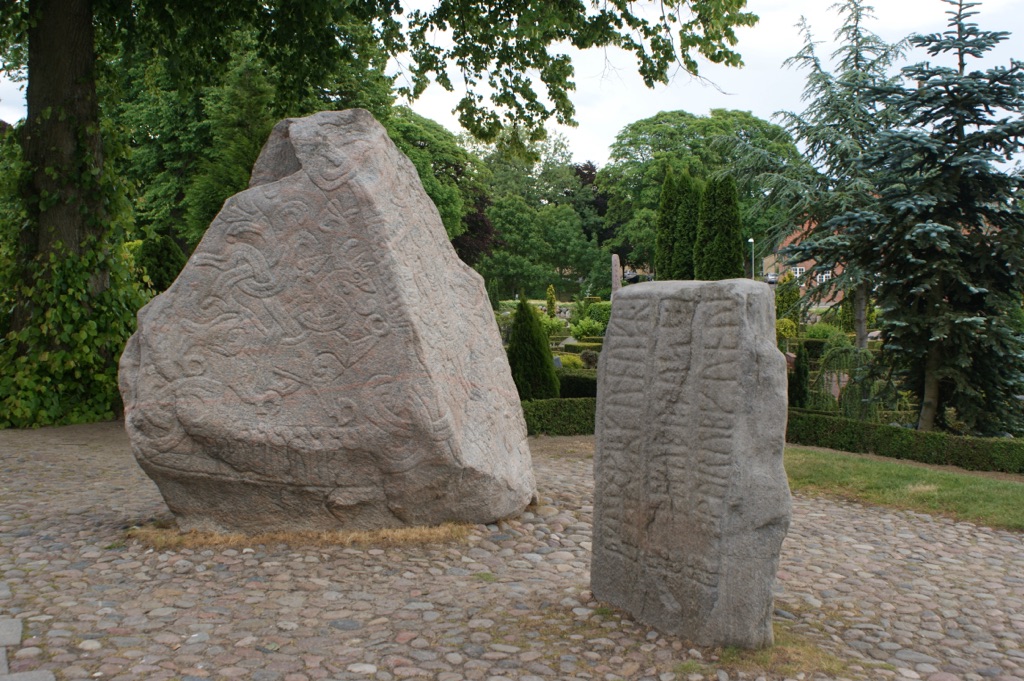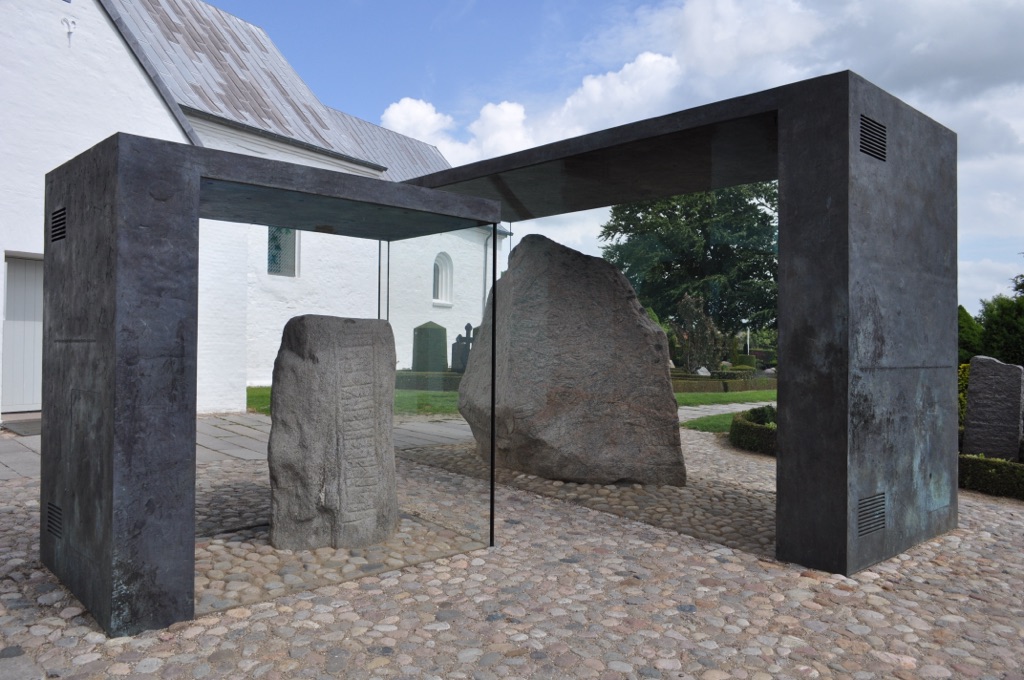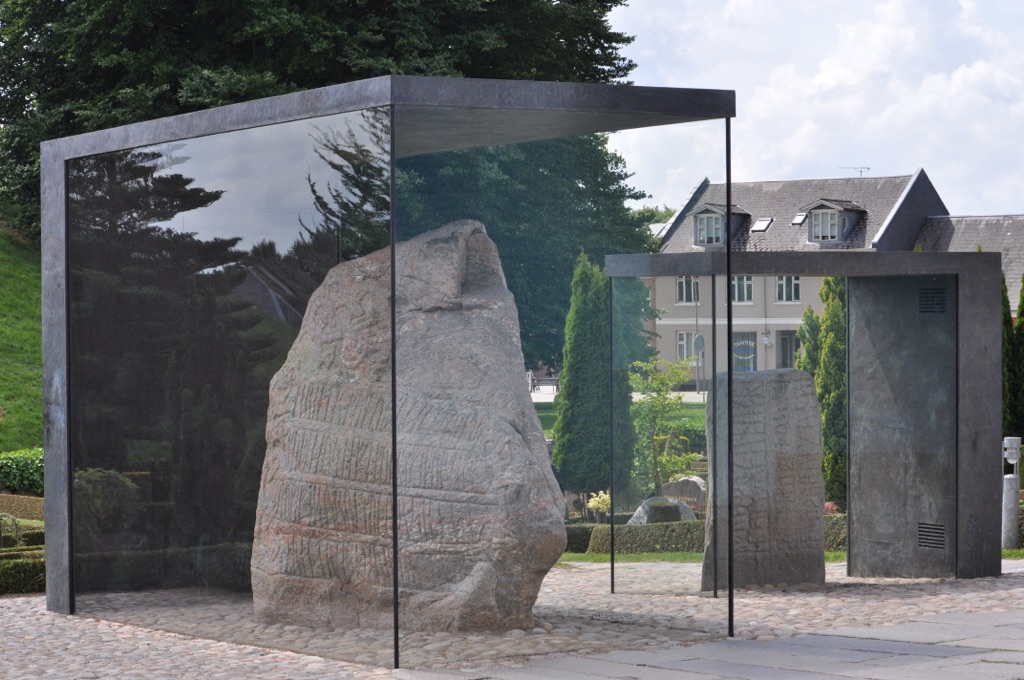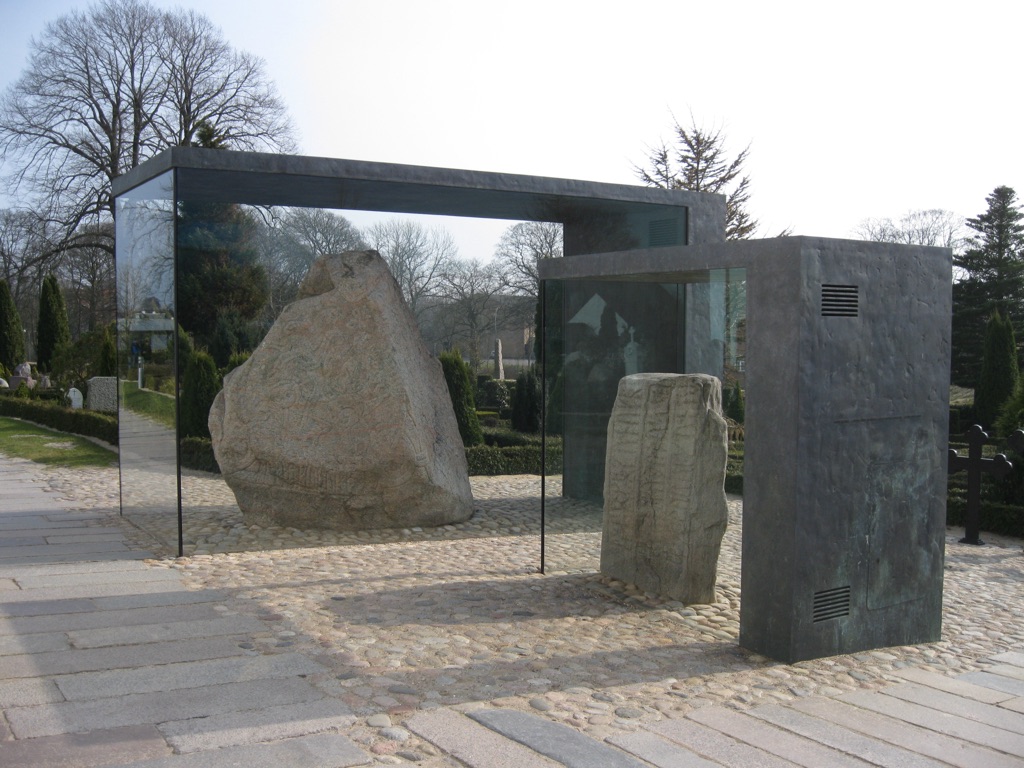The Jelling stones are a pair of remarkable runestones located in the village of Jelling in Denmark. They date back to the 10th century and are widely recognized as one of Denmark’s most significant historical artifacts. The larger of the two stones was erected by King Harald Bluetooth in memory of his parents and to celebrate his conquest of Denmark and Norway. The smaller stone was set up by King Gorm the Old, Harald’s father. Together, they mark the transition from paganism to Christianity in Denmark. The stones feature intricate carvings, including a depiction of Christ, which is one of the earliest representations in Scandinavia. The Jelling stones are often referred to as “Denmark’s birth certificate” because of their historical importance.
Get your dose of History via Email
Historical Background of the Jelling Stones
The Jelling stones were discovered in the 10th century in Jelling, Denmark. The larger stone, often called “Harald’s Stone,” was erected by King Harald Bluetooth around 965 AD. His father, King Gorm the Old, set up the smaller stone. These stones are a testament to the Viking Age and the dawn of Christianity in Denmark. They also signify the consolidation of the kingdom under one ruler.
King Gorm the Old is credited with the creation of the smaller Jelling stone. He was the first king in the line that would lead to modern Denmark. His son, Harald, who erected the larger stone, is famous for uniting Denmark and Norway. He also introduced Christianity to the Danes, a pivotal moment in the country’s history.
The Jelling stones have stood in their original location for over a millennium. They have witnessed the transformation of Danish society from pagan practices to Christian beliefs. The site has not been the scene of any known historical battles or events since their erection. However, it remains a place of immense historical and cultural significance.

Over the years, the Jelling stones have attracted attention from scholars and tourists alike. They were not always as well-known as they are today. Their significance was recognized gradually as understanding of runic inscriptions and Viking history improved. The site has been subject to archaeological studies that have shed light on the Viking Age and the early history of Denmark.
The Jelling stones are now part of a larger historical site, which includes a church and two large burial mounds. This area is often referred to as the Jelling complex. It has been the focus of extensive archaeological work, revealing a rich tapestry of history about the Viking Age and the early medieval period in Scandinavia.
About the Jelling Stones
The Jelling stones are comprised of two large runestones made from granite. The larger stone stands at 2.43 meters high and is decorated with intricate carvings, including a depiction of Christ. This image is one of the earliest known representations of Christ in Scandinavia. The smaller stone is simpler, with inscriptions that commemorate King Gorm’s wife, Thyra.
The larger stone’s runic inscription declares Harald as the king who unified Denmark and Norway and converted the Danes to Christianity. The inscription is accompanied by an image of a serpent entwined around a lion. The artistry of the carvings suggests the work of a skilled craftsman, possibly influenced by Christian art from other parts of Europe.

The stones’ construction required significant skill and resources, indicating the power and influence of the Danish monarchy at the time. The choice of granite for the stones was deliberate, as it is a durable material that has allowed the runestones to survive for over a thousand years in relatively good condition.
Architecturally, the Jelling stones do not represent buildings but stand as monuments. They are set within a larger complex that includes two burial mounds and a church, which are part of the historical and cultural landscape of the site. The church, which is situated between the two mounds, is built of chalk and stone. It likely replaced a wooden church that previously stood on the site.
The Jelling complex, with the stones as its centerpiece, has been recognized as a UNESCO World Heritage Site. This designation underscores the global importance of the runestones and the surrounding area. The site is a key piece of cultural heritage, not only for Denmark but for the understanding of the Viking Age and early medieval Europe.
Theories and Interpretations
Several theories surround the Jelling stones, particularly concerning their purpose and symbolism. The most widely accepted view is that the stones served as a memorial and a proclamation of Harald Bluetooth’s achievements. They symbolize the shift from paganism to Christianity in Denmark.
The depiction of Christ on the larger stone is subject to various interpretations. Some scholars suggest it signifies Harald’s personal conversion to Christianity. Others believe it was a political move to gain favor with the Christian powers of Europe. The image itself is an amalgamation of Norse artistic tradition and Christian iconography, reflecting the cultural changes of the period.

Mysteries also abound regarding the Jelling complex. The exact purpose of the burial mounds and the extent of the site’s sacred significance during the Viking Age are still debated. Some archaeologists propose that the site was a royal complex that served as a ceremonial center.
Historical records, such as sagas and chronicles, provide some context for the Jelling stones. Yet, much of their history is reconstructed through archaeological evidence. Carbon dating and other scientific methods have been employed to understand the timeline and usage of the site.
The Jelling stones continue to be a focus of scholarly research. New technologies, such as 3D scanning and imaging, have allowed for more detailed analysis of the runic inscriptions and carvings. These advancements may lead to further insights into the Viking Age and the early history of Scandinavia.
At a glance
- Country: Denmark
- Civilization: Viking Age Scandinavia
- Age: Approximately 1,000 years (10th century AD)

